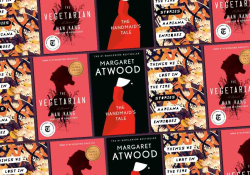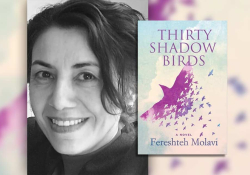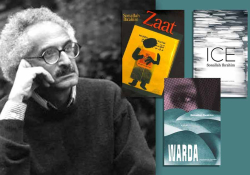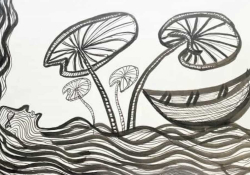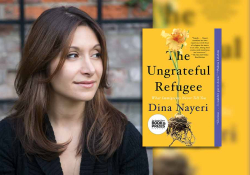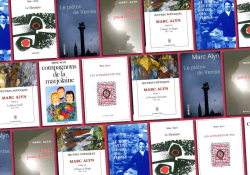What’s Left Unsaid: How Ismail Kadare Escaped Suppression but Embraced the Style It Taught Him
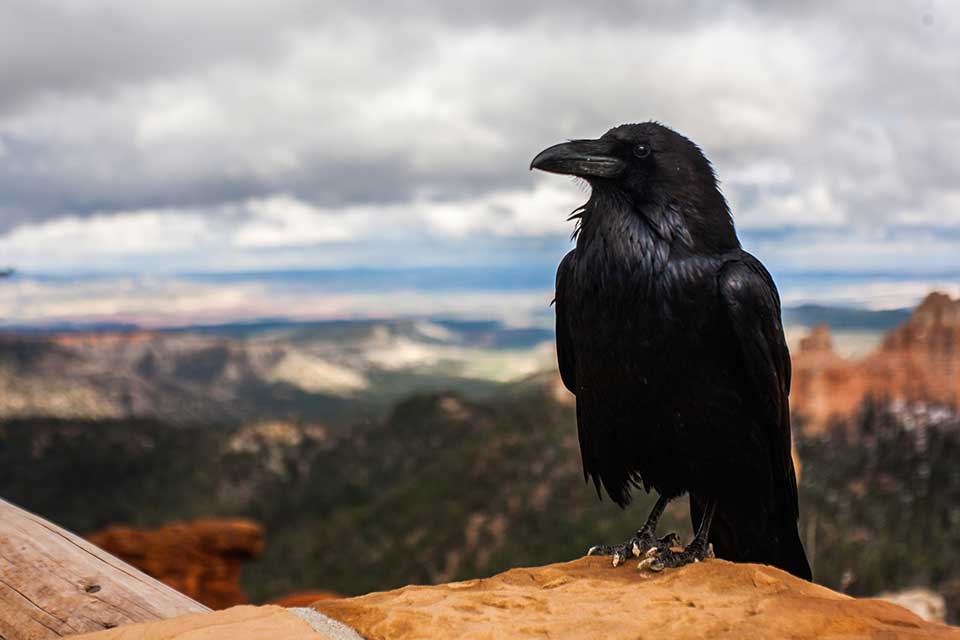
Ismail Kadare has a remarkable quality of saying a great deal and with much clarity, but in an elusive, oblique, and allegorical way. Peter Constantine situates Kadare’s work in the long history of the Balkans and in the broader tradition of writers who practice their craft under the constraints of censorship.
Anton Chekhov, in his comical short story “The Cross,” which he wrote in 1883, sets the scene in a high-society Moscow salon: a gathering of elegant Muscovites is crowding around a poet who, it seems, has just received a medal for his work. Is it a Stanislav Cross for the valor of his latest book of poetry? Is it an Order of Saint Anna Cross for patriotic stanzas in service of Imperial Russia? The tension mounts until the poet holds up his book and the guests see the large red cross of the czar’s censorship bureau. The poet’s latest book of poems has been banned. The eye of the imperial censor was severe, and some of its censors, such as Ivan Goncharov, were literary celebrities in their own right. All the great authors of the Russian literary canon of the nineteenth century—Pushkin, Dostoevsky, Gogol, Chekhov—had to set pen to paper with great care to avoid the censor’s red cross, and the problems that might follow in its wake. They each developed a personal way of self-censoring, a way of saying things without actually saying them, perhaps crossing the line occasionally, but in ways that were designed to elude the censor’s eye.
If the writers in Imperial Russia trembled before the czar’s censor, Stalin’s reign that began a decade after the Bolshevik Revolution brought a new dimension of alarm and terror to censorship, with persecution, imprisonment, years of hard labor, and execution. And what Stalin began in the Soviet Union, Enver Hoxha, Albania’s Stalinist dictator from 1941 to 1985, perfected, developing crueler strategies to censor and punish Albanian writers who were seen as stepping out of line. Stalin had faced an impediment that Hoxha did not. Stalin controlled one-sixth of the earth’s land surface, while the People’s Socialist Republic of Albania was just over eleven thousand square miles, less than a quarter of the size of New York State. Consequently, Hoxha found it easier than Stalin to monitor and control every form of expression. Albanian authors could also never be sure from what direction the order to ban their work might come. Even though all published books were carefully scanned for any actual or perceived ideological irregularities by the editors in chief of Albania’s state publishing houses (there were no independent or private presses), published books were also subject to arbitrary censorship or banning from the Ideological Section of the Central Committee, the Ministry of Education, and even the Directorate of State Security, which was not known for literary sophistication.
Under these circumstances of extreme totalitarian censorship, Kadare perfected a personal writing style that was both elusive and yet remarkably to the point.
Ismail Kadare came of age in the first years after Stalin’s death in 1953, when Hoxha was stepping up his Stalinist program in Albania. His first book of poetry, Frymëzime djaloshare (Boyish inspiration), came out in 1954, when he was eighteen, and immediately established him as an important new literary voice. In the following two decades Albania was to become the single most isolated country in the world, its borders sealed as Hoxha broke ties with a Soviet Union and Communist China that were, in his view, becoming too liberal. Under these circumstances of extreme totalitarian censorship, Kadare perfected a personal writing style that was both elusive and yet remarkably to the point. Peter Morgan has effectively summed up Kadare’s extraordinary ability to prevail:
Kadare produced some of the most brilliant and subversive works to emerge from socialist Eastern Europe. His work was published selectively and he was a well-known member of the Albanian Union of Writers and the Party. He was made a Deputy of the People’s Assembly, and he was able to travel abroad. He managed to avoid prison, the labour camps, or the other forms of punishment meted out to those who stepped out of line.[i]
I became one of Ismail Kadare’s translators in the late 1990s. Albania’s Socialist dictatorship had fallen. Ismail Kadare was now living in France, and freed of the dangers of Enver Hoxha’s censor, he embarked upon a formidable new creative period. The two central preoccupations of his works of the 1990s were the Albanian dictatorship, about which he could now write more directly with impunity, and the Kosovo crisis that had continued to escalate since 1989 when the Assembly of Serbia occupied Kosovo, which had been an autonomous province of Yugoslavia inhabited for the most part by ethnic Albanians. By 1998 the Kosovo crisis had developed into an all-out war.
The works Kadare wrote in his first years abroad—The Pyramid, Spiritus, The Eagle, and Elegy for Kosovo—were more direct and outspoken than the masterpieces that had first brought him world fame during the years of the dictatorship.[ii] And yet these new works have kept the remarkable Kadarean quality of saying a great deal and with much clarity, but in an elusive, oblique, and allegorical way.
Elegy for Kosovo, which I translated in 1999, is one of Kadare’s shorter novels, but despite its brevity (120 pages), it is a profound and nuanced literary exploration of the conflict that has plagued Kosovo since the medieval era when it was annexed by the Byzantine Empire, then the Serbian Empire, and then the Ottomans. It offers a key to a deeper understanding of the roots of the ethnic conflicts in Kosovo today. According to Stendhal, “Politics in a novel is like a pistol shot during a concert, it is a coarse thing.”[iii] Though this is a very political novel, there are no politics in it, no coarseness. At the center of the novel is the Battle of Kosovo of 1389, an event that over the centuries triggered an array of heroic legends throughout the Balkan peninsula. It was a catastrophic battle for all involved: a confederacy of Balkan troops faced the invading Ottoman army led by Sultan Murad I. From a historical perspective, neither side won. The Ottoman sultan was killed, as was Prince Lazar, the commander of the Balkan forces, but the battle marked the beginning of the Ottoman occupation of the Balkans that was to last into the nineteenth century.
The most significant body of heroic legends about this battle that have been preserved are Serbian, and these legends, in the form of poetry, songs, and ballads, have played a vital role in Serbia’s contemporary efforts of nation-building. Elegy for Kosovo counters the perception that the battle was a purely Serbian and Ottoman event and presents the more nuanced image of an army that was not exclusively Serb but a confederation of troops with battalions of Serbs, Albanians, Bosnians, Rumanians, Croats, and Hungarians—a Balkan army. Kadare challenges the Serbian appropriation of the battle and the nationalist ideology that has used the fictional narratives of the Serbian legends to legitimize the formation of a new political order and the program to occupy Kosovo.
As in many of the Balkan epic songs of this region—both Albanian and Serbian—the narrative of the novel begins with princes gathering to drink on the eve of the war. The ensuing battle is chaotic and deadly, and two minstrels, the protagonists of the novel, flee the carnage and wander northward singing their traditional epics at manor houses and castles. They are unlikely comrades—one minstrel is a Serb and the other an Albanian, each having been brought to the battlefield to sing the old epics that glorify their people and to compose new ones that will immortalize their princes. Though the minstrels are comrades and friends, the ballads they continue to sing before the European nobility perpetuate the age-old enmity.
One after the other, in the heavy silence, they sang their songs, ancient and cold as stone, each in his own language: “A great fog is covering the Field of the Blackbirds! Rise, O Serbs, the Albanians are taking Kosovo.” “A black fog has descended—Albanians, to arms, Kosovo is falling to the damned Serb.”[iv]
From Kadare’s perspective, this crude hostility is the continuing tragedy of the Balkans.
The northern European nobles are first speechless, then furious. The Balkan lands will be ruled by the Ottomans, and yet still these subjugated peoples, who must now live under the Ottoman yoke, are keeping their traditional animosity alive. Their infighting continues in their songs. They cannot break free from the strictures of their militant traditions. Kadare presents these scenes but does not directly comment. The reader is not told, but can infer, that this is the undying root of the problem that plagues the Balkans. Yet when the minstrels are asked to narrate the more ancient legends of their lands—in speech, not in song—these legends open out and take on Homeric dimensions: “They are of the same diamond dust, the same seed . . . thunderclaps like fragments of the crown fallen from the ancient sky.”[v] The crude hostility is gone.
From Kadare’s perspective, this crude hostility is the continuing tragedy of the Balkans. The spirit and the epic history of its peoples reach back to a Homeric Bronze Age, but the medieval epic songs and ballads that have sprung from the prelude and aftermath of the Battle of Kosovo have perpetuated their deadly enmity. Northern Europe, in its dark age of medieval war and plague, has lost all links to its past; the Balkans are the only conduit to that ancient time.
University of Connecticut
[i] Peter Morgan, Ismail Kadare: The Writer and the Dictatorship, 1957–1990 (Routledge, 2020), 1.
[ii] The novels Spiritus, Shkaba (The eagle), and Ra Ky Mort e u Pamë: Ditar për Kosovën (Death came upon us and we met: Kosovo diary) have not yet been translated into English.
[iii] Stendhal, La Chartreuse de Parme (M. Lévy Freres, 1864), 366 (my translation).
[iv] Ismail Kadare, Elegy for Kosovo: A Novel, trans. Peter Constantine (Arcade, 2000), 52.
[v] Kadare, Elegy for Kosovo, 100.

